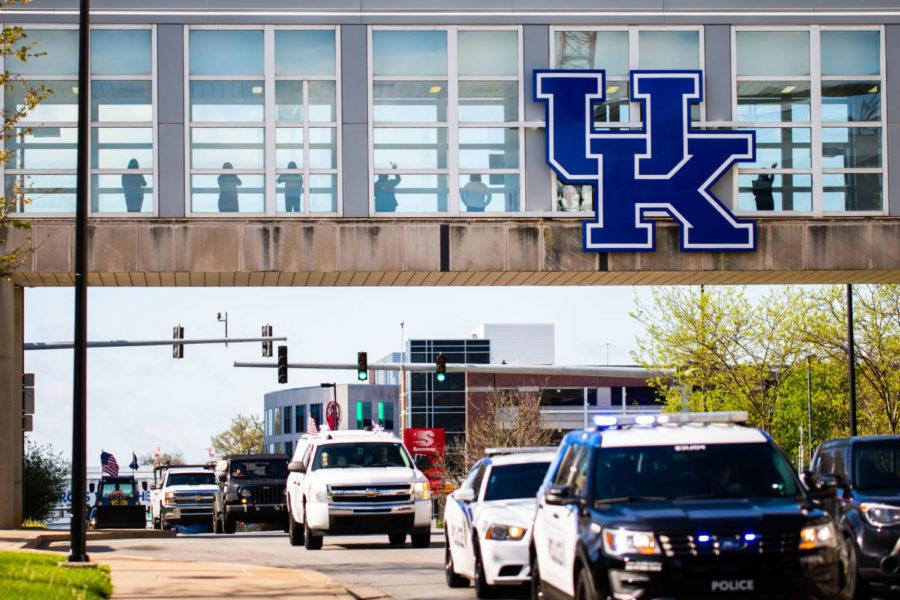A Lexington surge, potential vaccines and Thanksgiving plans: Local health experts urge community to refocus.
November 13, 2020
This holiday season, give thanks by not killing someone’s grandmother.
Listening now? By this point, many are desensitized to the constant recommendations to wear masks, wash hands and social distance. As the months of the pandemic have dragged on, initial diligence has faded or disappeared in many communities. Some have decided to unilaterally reestablish “normalcy” for themselves, against the unrelenting pleas of health officials, government figures and journalists.
In a news conference Friday morning, four Lexington health experts said that amid a big surge in Lexington, that is unacceptable. While everyone is experiencing fatigue, the community cannot afford any more lax behavior, especially approaching the holiday season, said Mark Dougherty, MD, a Baptist Health Lexington infectious disease specialist.
“Everyone’s tired of not seeing family members and friends. We have to stick it out,” Dougherty said. “Every day this week we hit a new record in terms of the numbers of patients that are in the hospital.”
Currently, there are approximately 150 to 200 hospitalized patients in Lexington, a third of which are in a UK HealthCare’s ICUs, said Colleen Swartz, vice president of hospital operations. While UK HealthCare maintains adequate supplies of PPE and ventilators, Swartz said the staff and providers are fatigued and the number of inpatients has increased dramatically—from 20-25 patients a few weeks ago to 55-60 Friday morning. Some children are among those hospitalized.
“We’ve had some young individuals with no comorbidities, no underlying health conditions, become critically ill and we’ve even lost a few individuals to this infection,” Swartz said.
During the holidays, there will be pressure to “drop the ball” on mask-wearing and limited exposure, said Dan Rodrigue, MD, an infectious disease specialist affiliated with CHI Saint Joseph Health.
“(Dropping the ball) will have a consequence down the line, and you might not even see the consequence,” Rodrigue said. “You don’t want to get somebody else’s grandma that sick, and potentially die from our own actions.”
In less than two weeks, UK students will travel home for an extended winter break. To minimize community spread and pandemic surges, they must make sure the academic break doesn’t turn into a COVID break.
There are several measures UK students can take to minimize risk as they plan to travel home.
First, students should self-quarantine seven or eight days before leaving, said Alice Thornton, MD, a UK HealthCare infectious disease specialist. This means decreasing their time around all other people and avoiding unnecessary actions like going out to eat.
Second, Thornton said that pre-travel testing would be a wise decision, although it isn’t a free pass.
“That by no means means that you’re completely safe, but at least at that moment in time, you know that you don’t have the virus because we know there can be asymptomatic spreading,” she said.
Third, families should have discussions on their COVID approach before everyone comes home, Thornton said. Members can make joint decisions on whether or not to mask up and socially distance the first few days at home, as well as the extent to which family members will limit the people they are around, specifically elderly family or community members. That way, everyone can stay safe and on the same page, Thornton said.
Dougherty offered additional advice, suggesting that even a ten-person gathering, if it includes college students coming from different cities and states, could be “a dangerous proposition.” To be safe, he said families should consider postponing Thanksgiving this year or celebrate in a very small pod.
While this may sound drastic, Dougherty said that nursing home residents are no longer the main super spreaders.
“One of the major drivers of the pandemic is young adults right now,” he said. “It’s a lot of young people are going to their college classes with masks on and then getting together socially and partying together and not wearing a mask.”
UK’s positive cases have been slowly declining over the past weeks and months, but Dougherty thinks that most universities’ numbers are misleading. Students don’t want to get tested and quarantine, he said, and they might confuse mild COVID symptoms with allergies or another sickness.
“A lot of those people that just are mildly ill or pre-symptomatic still can shed massive amounts of virus,” Dougherty said. “The most viral, the highest viral loads that we’ve ever seen in any viral infection ever by orders of magnitude are in some of the minimally symptomatic patients.”
However, the future isn’t all bleak. There is good news on the horizon—the vaccine is coming.
Dougherty estimated that at least one vaccine would be available to the general public sometime in the spring or second quarter of 2021. Pfizer is showing promise, and several other vaccines, including the Janssen vaccine and Lilly monoclonal antibody, are also making significant progress.
Even without a vaccine, hospitals have developed better standards of care and treatment options since March and April, Thornton said.
But better medication isn’t an excuse to get sick. Public health measures flattening the curve are the only reasons hospitals have sufficient capacity and resources to effectively treat COVID patients. People’s behavior during the holidays will decide whether the post-Thanksgiving surge is manageable or out of control.
“It’s a holiday that many people value and look forward to and it really is a reconnection time. That could happen this year virtually,” Thornton said. “I think it may not be as good, but it will be worth it if everybody in your family, and those people we care about, stay safe until we get out to the other side of COVID.”




























































































































































